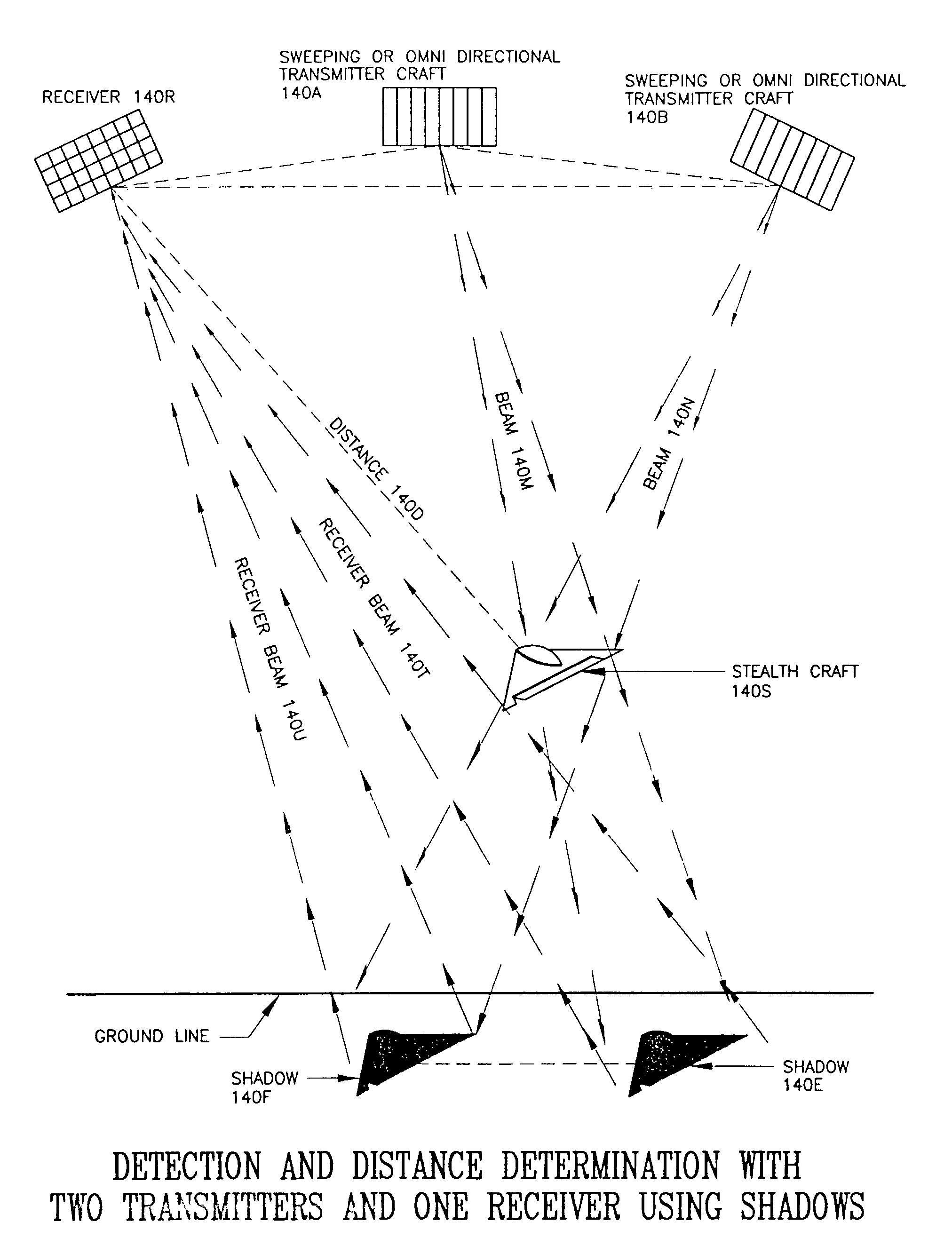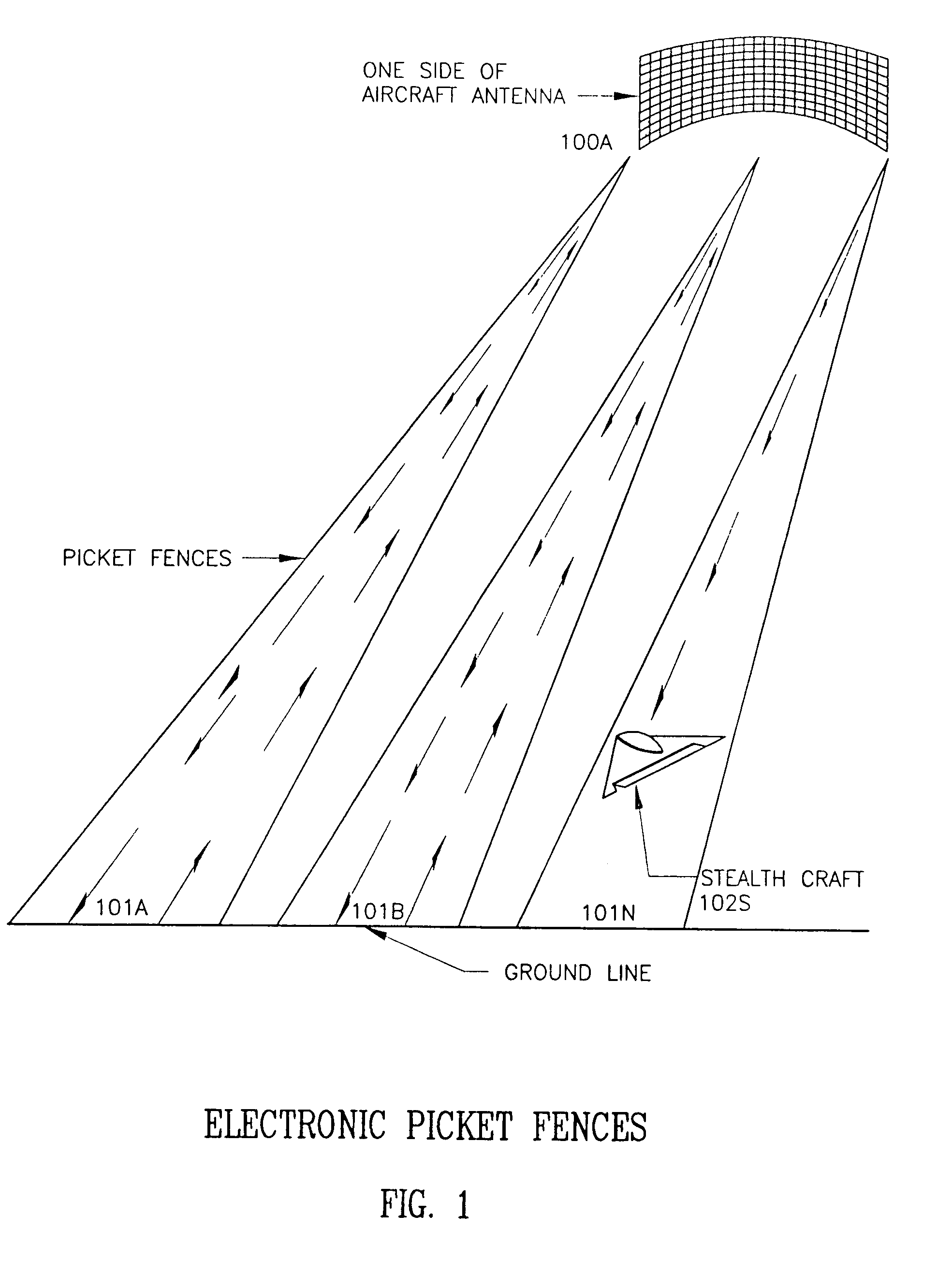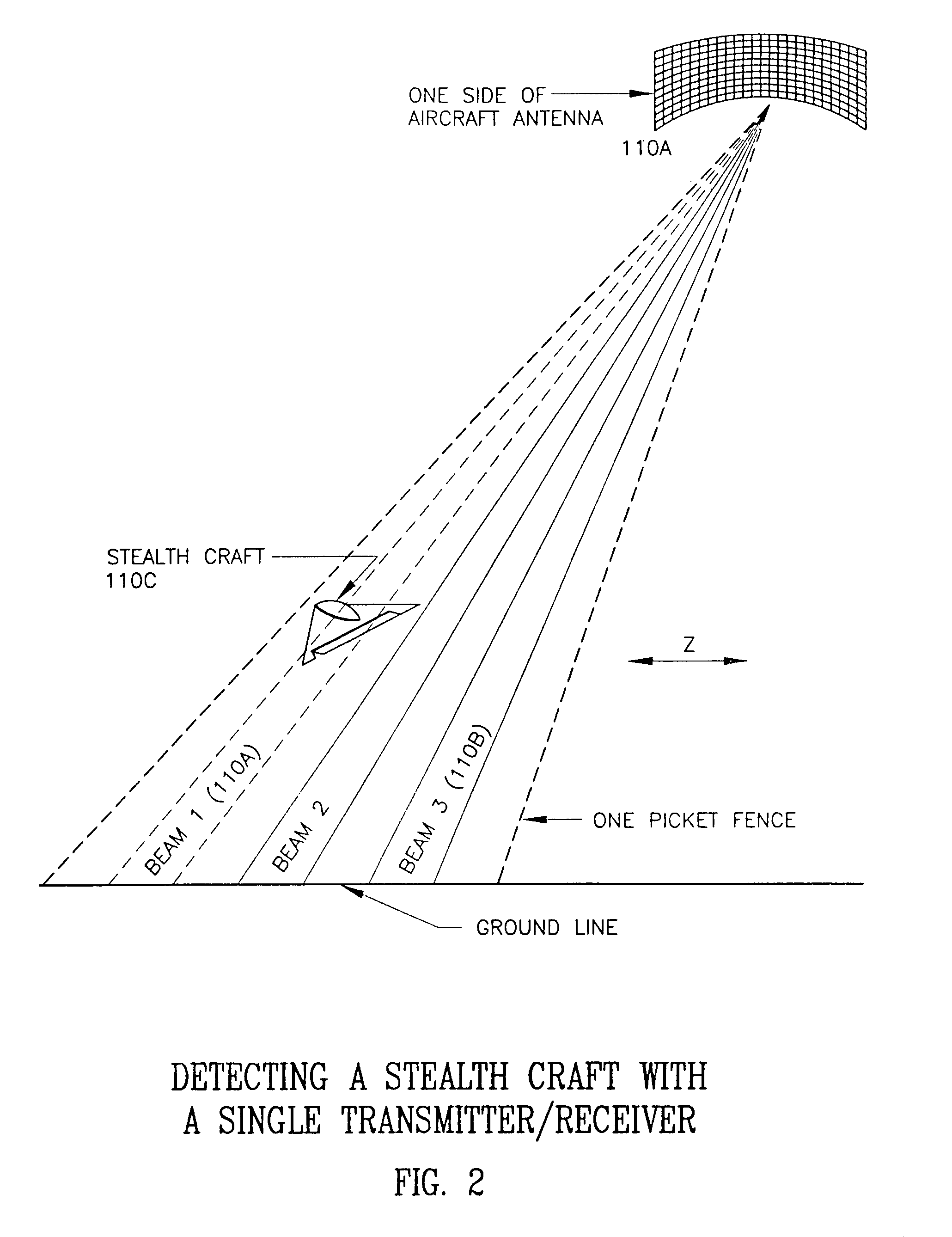Method and apparatus for the detection of objects using electromagnetic wave attenuation patterns
a technology of electromagnetic wave attenuation and object detection, applied in the direction of communication jamming, measurement devices, instruments, etc., can solve the problems of extremely limited off-axis sensitivity by design, limited system, limited to certain electromagnetic bands, etc., and achieve the effect of increasing the percentage of attenuation
- Summary
- Abstract
- Description
- Claims
- Application Information
AI Technical Summary
Benefits of technology
Problems solved by technology
Method used
Image
Examples
Embodiment Construction
[0054]The preferred embodiments will now be described by way of example, in which like reference numerals indicate like elements.
[0055]In standard active detection, a beam of electromagnetic energy, such as microwave, visible light, or infrared light (from a laser) is directed toward a target and the energy reflected from the target is used to detect the presence of the target, and to derive characteristics of the target, such as distance, bearing, speed, and size.
[0056]However, according to the present invention, negative radar, a microwave beam is bounced off a large reflector, such as the Earth, and the silhouette (or attenuation of the microwave) that the object produces against the beam or a reflection of the beam is detected. This method can also be used with non-stealth craft, since the Doppler shift of microwaves reflected from a non-stealth craft can be used to differentiate it from the microwave reflected from, e.g., the Earth, so that the microwaves reflec...
PUM
 Login to View More
Login to View More Abstract
Description
Claims
Application Information
 Login to View More
Login to View More - R&D
- Intellectual Property
- Life Sciences
- Materials
- Tech Scout
- Unparalleled Data Quality
- Higher Quality Content
- 60% Fewer Hallucinations
Browse by: Latest US Patents, China's latest patents, Technical Efficacy Thesaurus, Application Domain, Technology Topic, Popular Technical Reports.
© 2025 PatSnap. All rights reserved.Legal|Privacy policy|Modern Slavery Act Transparency Statement|Sitemap|About US| Contact US: help@patsnap.com



